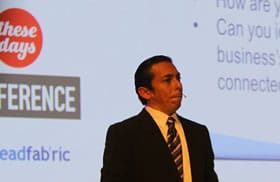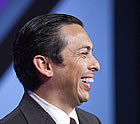
In an interview with leading Belgian marketing magazine Pub at the occasion of i-SCOOP’s Fusion Marketing Experience “Social Business Sessions with Brian Solis and Olivier Blanchard” in Antwerp, Brian Solis was asked about the main difference between the ‘Like’ button on Facebook and other direct response triggers.
Although it might seem a simple question for social media practitioners and others, it reminded me of studies I often see, calculating the value of a Facebook fan or even a “Like.”
Some businesses have tried to monetize fans and “likers” by isolating the relationship a company has with them from the relationship with ‘non-fans’, and comparing the (business) relationship with both. Although there are probably differences between fans and non-fans, such calculations make no sense.
There are many reasons why people become fans or “like” a brand: promotions, coupons and rebates (the main reason), an existing business relationship, peer pressure, doing someone a favor, an existing emotional bond, etc.

In fact, as Olivier Blanchard said at a recent Fusion Marketing Experience event, as long as there is no revenue, direct (sales, cost savings,…) or indirect (e.g. the impact on brand metrics), the value of a fan is negative. It costs money to maintain a Facebook presence and we often even spend money to acquire fans and ‘likes’.
However, as Brian Solis says in the interview, “Facebook’s Like button is often confused as an ‘Opt In’ by marketers.”
Brian Solis: “All too frequently people who have clicked the Like button are thought of as a captive community where customers have opted in to engagement. The difference between Like and other direct response triggers is that the Like is an act of fleeting value that must be earned over and over again.”
“Traditional response triggers are exchanges that are rooted in what I refer to as the A.R.T. of Engagement…Actions, Reactions, and Transactions,” Brian continues.
The difference between potential reach, engagement and value
There obviously is also a difference between liking a brand and actual engagement.

Brian Solis: “Likes represent potential reach. But businesses cannot take or assume satisfaction in these numbers as they’re reflective of the people reached and not the people who could be reached”.
“Contests, campaigns, gimmicks, while effective in intermittent bursts, are not sustainable nor are they indicative of organic engagement. They generate numbers but not true engagement. Facebook represents a tremendous opportunity to design and steer customer experiences. Whether it’s for marketing, service, sales, co-creation or collaborative engagement, Facebook is a social hub where the various needs, expectations and roles of customers can be met by a fully engaged social business, not just a social brand or social marketing initiative”.
It should be noted that some studies show less than 1% of Facebook fans are actually ‘engaged’. Furthermore, engagement does not equal revenue either.
It’s all about the resulting (inter)actions, the “aftereffect”. That’s a long way from the act of liking or becoming a fan. Furthermore, without relevance and engagement there is no (trans)action, (inter)action or value.

